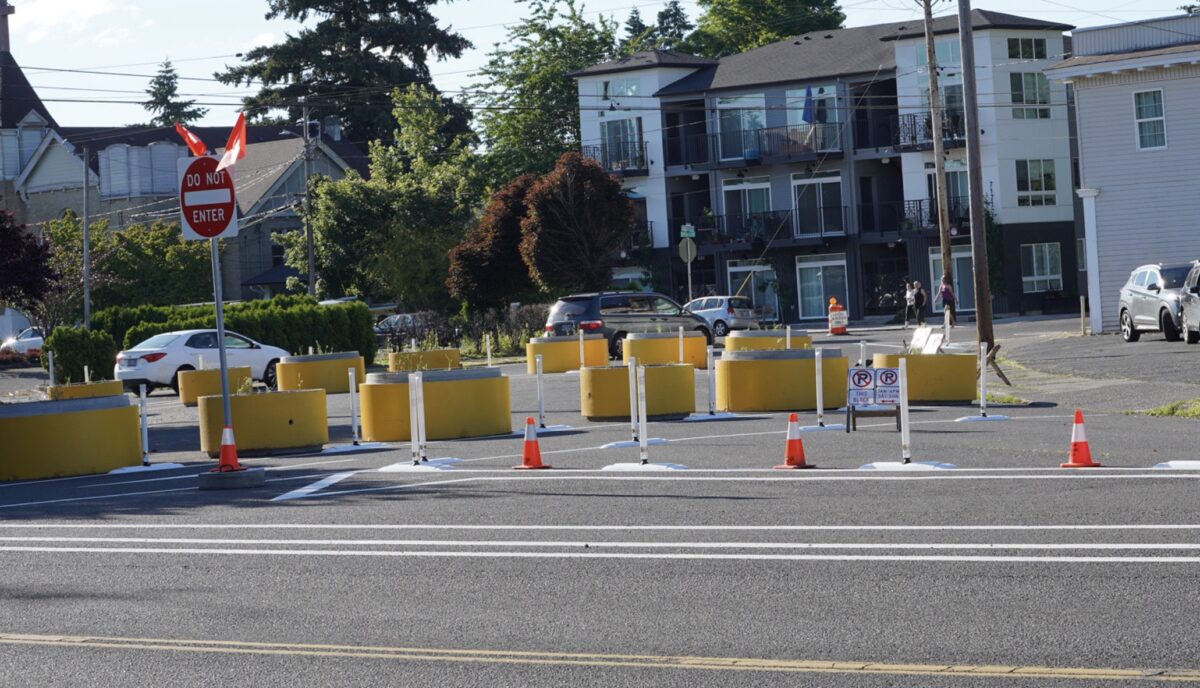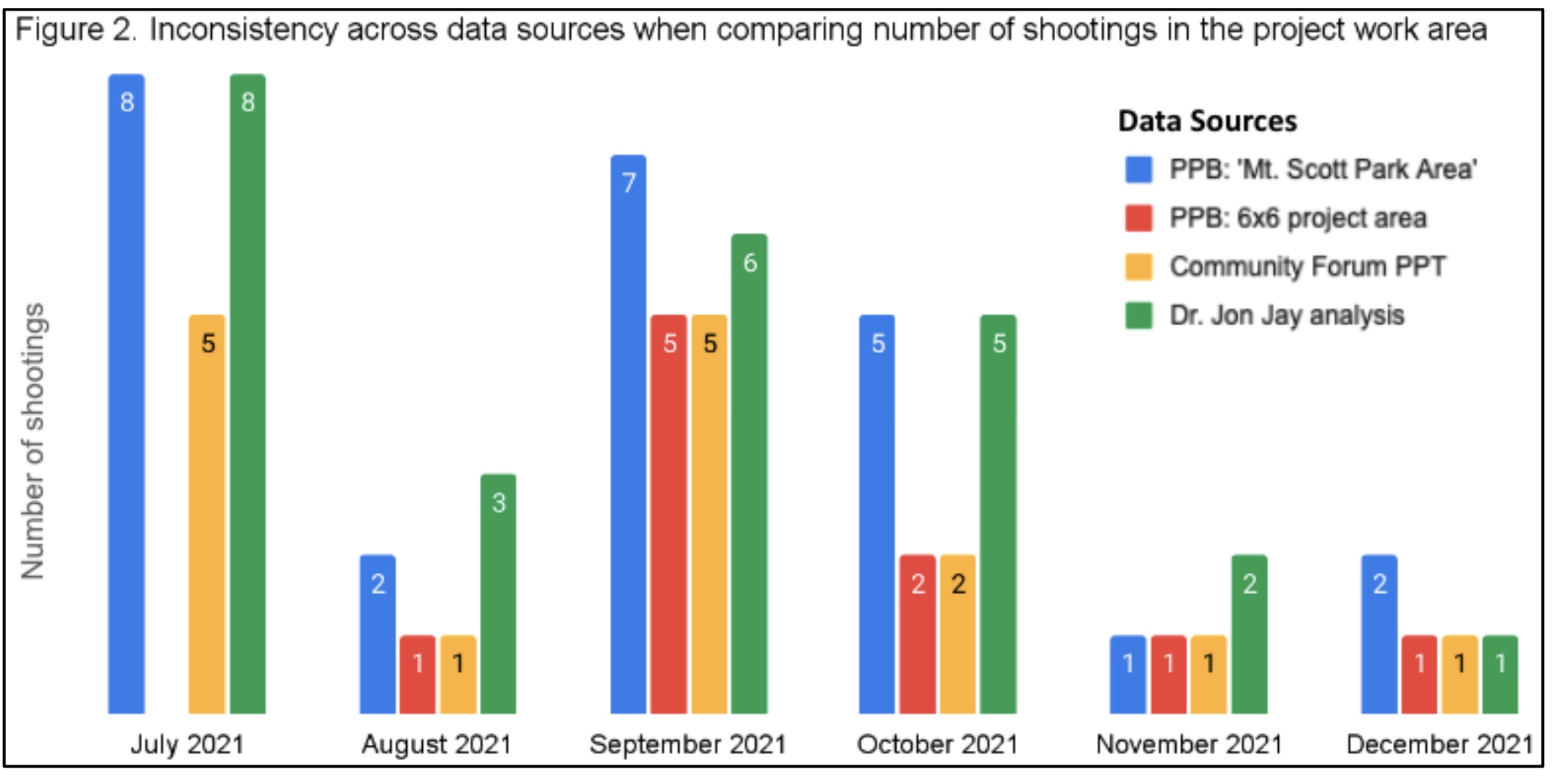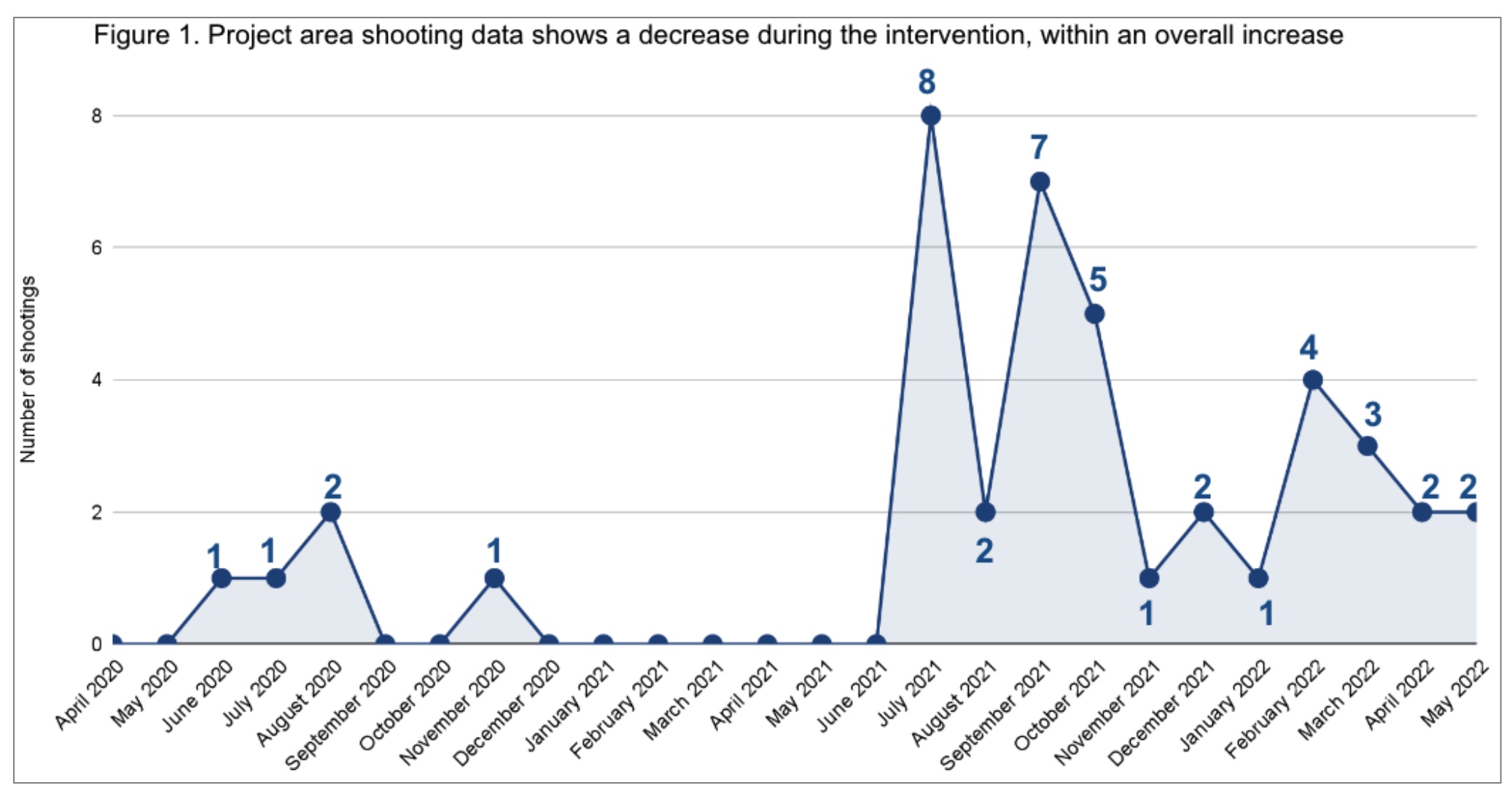
(Photo: Jonathan Maus/BikePortland)
When multiple bureaus at the City of Portland came together with concerned residents on a novel approach to address a disturbing rise in shootings and speeding in the Mt. Scott-Arleta neighborhood last fall, many people responded with ridicule. Now a new report builds on initial claims that it just might be working.
We’ve taken a keen interest in this project because it thrusts the topics of street safety and traffic violence into the much broader (and more politically salient) conversation about how to improve public safety and reduce gun violence. There’s also a political angle here: Portland Bureau of Transportation Commissioner Jo Ann Hardesty spearheaded the effort in response to concerns she heard from neighborhood leaders.
Hardesty has a lot riding on this because it has become a signature project for two of her biggest focus areas: transportation and policing.
The Mt. Scott-Arleta Intervention Pilot was inspired by concerns from people who live in the neighborhood and it leans on public health experts and a planning concept known as Crime Prevention Through Environmental Design (CPTED). It included barricades and restrictions on driving behaviors in streets, community events in Lents Park, more visible patrols by Portland Police officers and Park Rangers, video camera installations and business, and relationship-building between agencies and neighborhood groups.
Back in March, five months after the pilot began, Hardesty issued a statement saying the efforts were paying off. She cited a 64% reduction in shootings (compared to the previous three months) and positive feedback from residents. This initial evaluation of the pilot was done with city data and was not independently verified, so many people dismissed it.
A new report by an independent consultant released in June 2022 says more data is still needed, but the project appears to be having a positive impact. Here’s a snip from the 14-page Mt. Scott-Arleta Community Safety Project Evaluation Report (PDF) submitted to the Portland Office of Management and Finance (OMF) Community Safety Division on June 30th and compiled by Michelle Helman Consulting:


“Findings are promising and suggest that the project may have contributed to the decrease in shootings during the project timeline. Analysis of Portland Police Bureau (PPB) shooting data shows the number of shootings decreased in the ‘project area’ (where joint patrol missions with Portland Parks & Recreation took place) during the implementation timeline (Sept-Dec. 2021) – within a trend of overall increase. An increase in shootings post-intervention suggests the intervention may [have] had an impact, and this demonstrates the need for the project to continue with more comprehensive data analysis to determine outcomes.
Challenges to determine whether the intervention caused or contributed to the change include that statistically; shootings decrease in the summertime, there is inconsistency in reporting the number of shootings per month, and it is unclear how the project work area was defined by all sources.”
I asked Lisa Freeman, a program manager at the OMF Community Safety Division, for a bit more context. She said after the initial analysis, the city wanted an external evaluation to more carefully review the project.
“The external evaluation largely validated the findings reported in March,” Freeman shared. “And was able to more comprehensively document the project, process of implementation, and offer recommendations for future activities.”
That “future activities” part is important because while we can debate the statistical impact of this approach, there’s no debating that the City of Portland plans to double-down on it. Mayor Ted Wheeler likes the approach so much he made it one of the focus areas of his new gun violence reduction plan.
Yet while the main takeaway is positive, the report lists several potential pitfalls as the city looks to continue and expand this type of work: Communication strategies need to improve so there’s not another (inaccurate and click-baitey, yet understandable) “orange barrels to reduce gun violence” news cycle; local volunteer time cannot be taken for granted; asking PPB officers to work overtime is unsustainable (and politically unpalatable); and more BIPOC and non-English speaking community members need to be included in the planning.
Look for this project and others citywide to become more common as more Portlanders realize that many of our public safety problems are interconnected, and bureaus like parks and transportation can have just as much impact as police.
Check out the project summary or full report.




